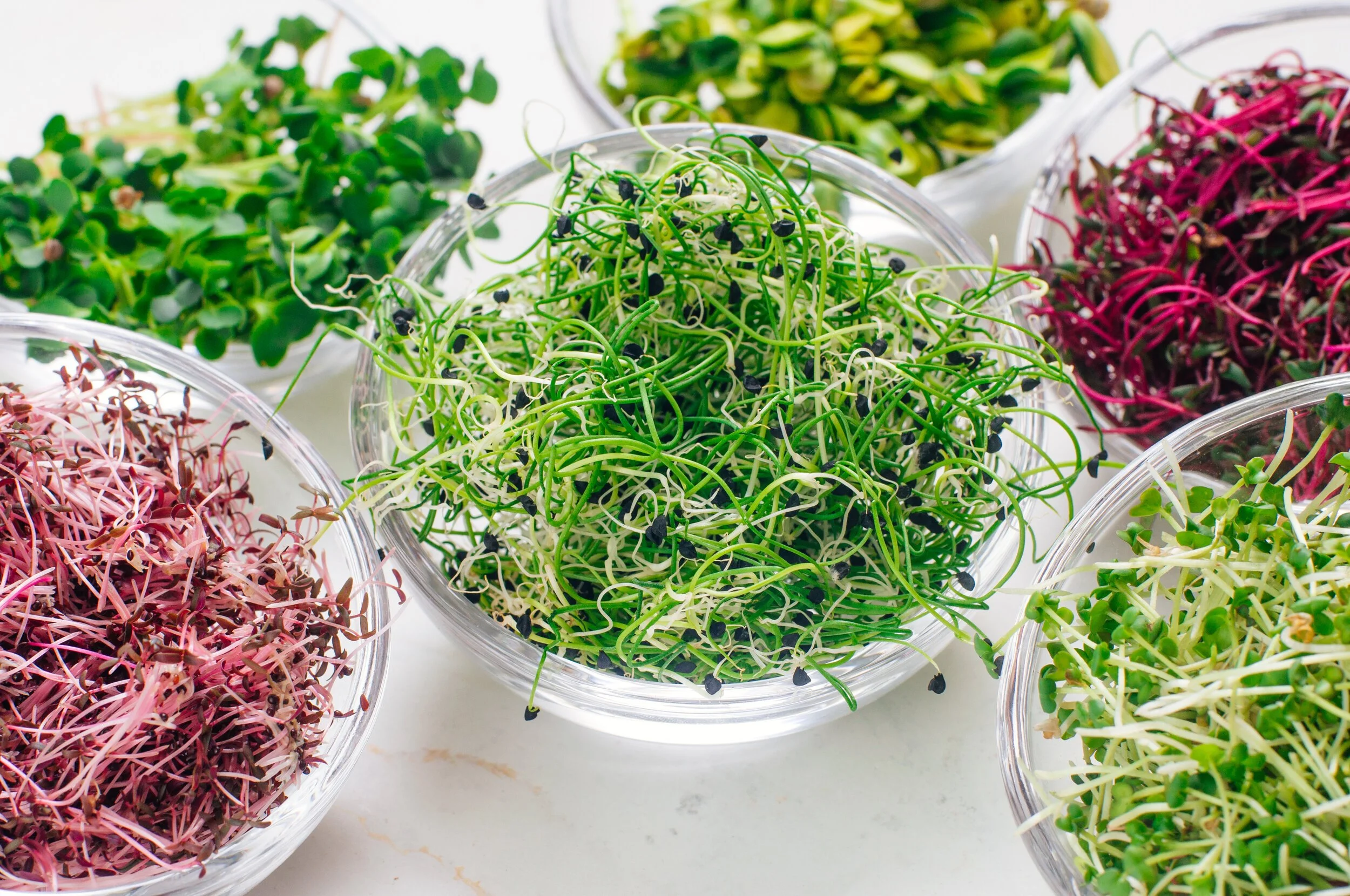The Lowdown on Sprouting
By Kelly Morgan, Ph.D., M.B.A.
Chair, Fundraising and Marketing Committee
Sprouting your food is super easy, inexpensive, and provides so many nutritional benefits. You don’t need much of a green thumb to have success with sprouting—it’s low-maintenance and requires basic equipment that you probably already have lying around in your house.
You can sprout most legumes, nuts, seeds, and some grains, such as wheat. There are, however, a few foods you should be careful about sprouting, such as kidney beans and quinoa, which might upset your stomach. Sprouted kidney beans should not be eaten raw. You can also “technically” sprout chia and flax seeds, but it is difficult and not usually worth the effort.
Contrary to what some might think, sprouting your foods is safe and simple. Because you will be working on such a small scale (compared to the mass production of companies), it is much easier to control your environment and keep it sanitized. It would be best if you made sure that the supplies you’re using are clean, that your sprouts are getting enough air, and that you always wash your hands before and after handling the sprouts.
So, what do you need to sprout?
While you don’t need special sprouting seeds, they make the process easier. Most imported foods that we find at the grocery store are irradiated so that they cannot sprout. Secondly, companies sell sprouting seeds knowing that you intend to sprout them, ensuring their environment is sanitized correctly and that there are no harmful pathogens in them.
In contrast, if you buy a regular bag of beans, the manufacturer is assuming you will boil them, getting rid of any potential lingering pathogens, so they aren’t overly careful. You can order sprouting seeds online if you have trouble finding them at your grocery store.
Once you have your seeds, all you need is a clear jar, some breathable material such as cotton, and a rubber band. The first thing you need to do is soak your seeds in the jar. A general ratio to follow is 3:1 parts water to seeds. Depending on what you’re sprouting, the soaking time will vary.
For example, chickpeas should soak for 8 hours, whereas sesame seeds should soak for only 2 hours. You can leave the jar open or close it with your breathable cloth and rubber band. After soaking, drain and rinse with fresh cold water. Place your jar in a bowl upside down and make sure it’s able to drain. Twice a day, rinse and drain your sprouts. The length of time you harvest your sprouts depends on the type of sprout and personal preference.
When they’re finally finished, rinse and drain them one last time and lay them out on a kitchen towel to dry for around an hour. Make sure to store them in a container with some paper towel to absorb any excess moisture and place them in the fridge. They can usually last a week if stored properly. You can add sprouts to your salads, sandwiches, add them to your omelet, or whatever you choose—the possibilities are endless.

